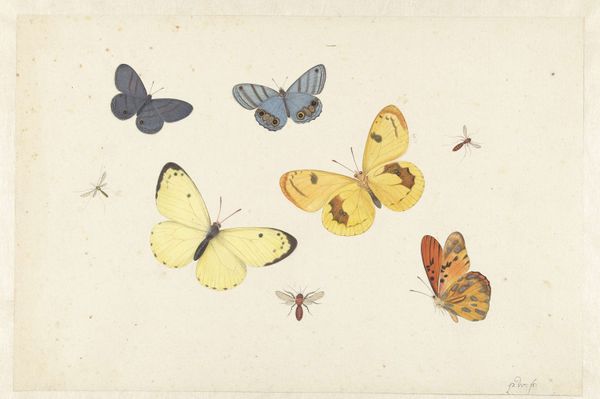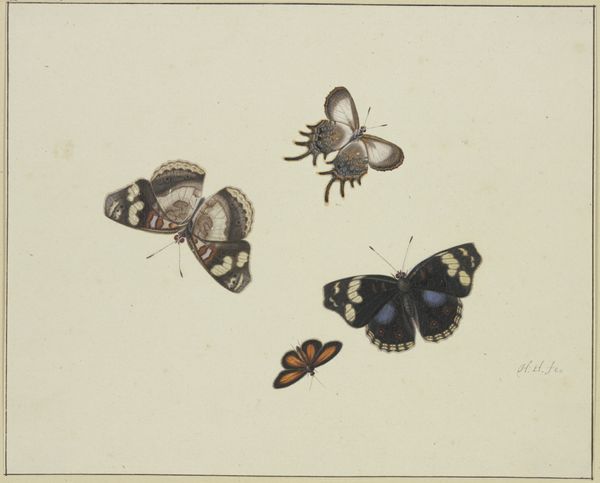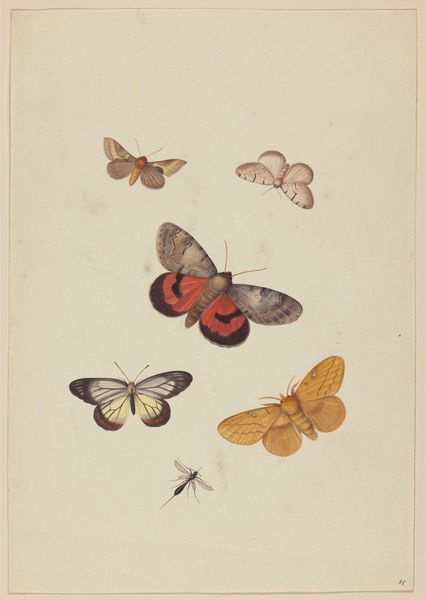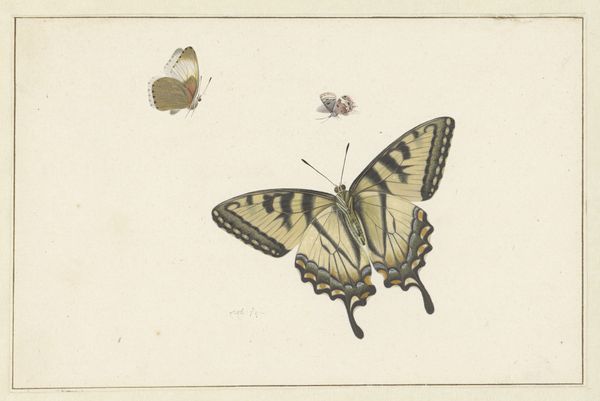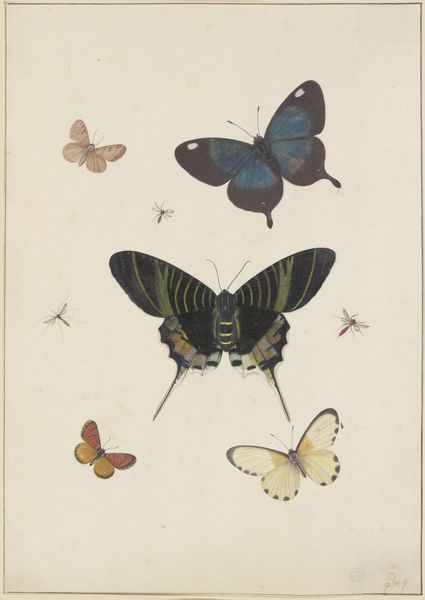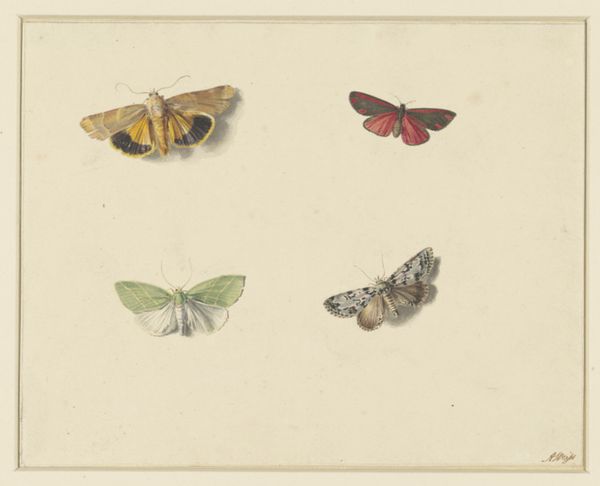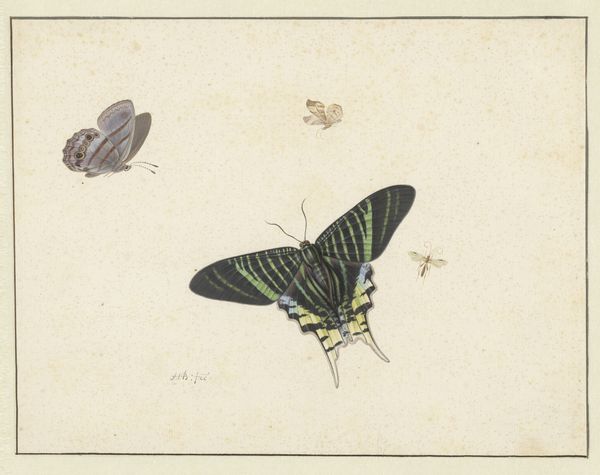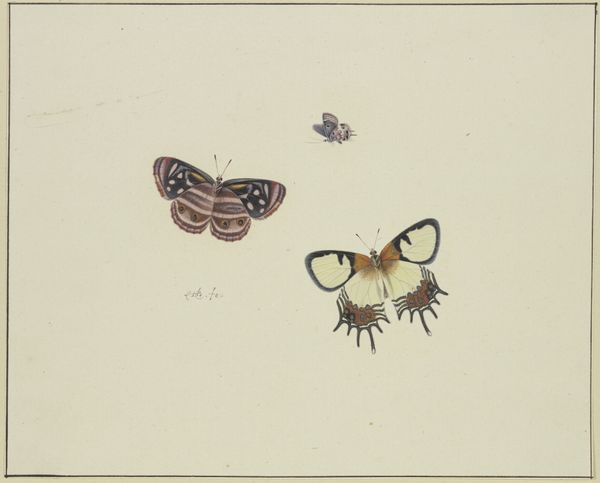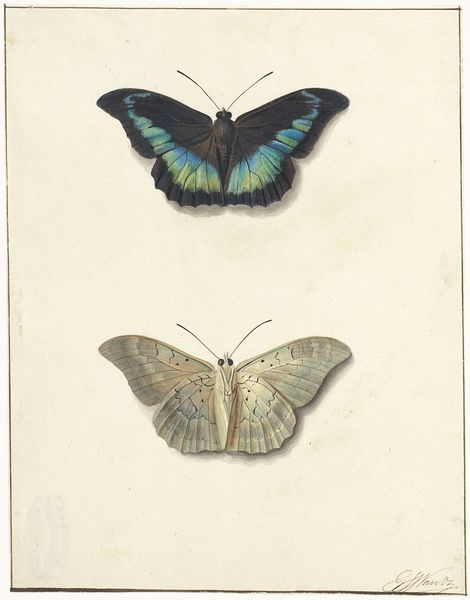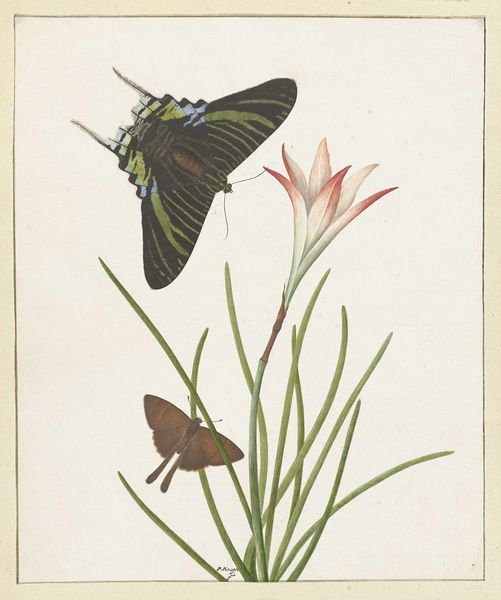
Dimensions: height 127 mm, width 207 mm
Copyright: Rijks Museum: Open Domain
Editor: This is "Vijf Vlinders" by Herman Henstenburgh, dating from around 1677 to 1726, rendered in watercolor on paper. There's such delicate precision to these little butterflies. What do you make of it? Curator: Well, immediately, it reminds me that even still life isn't still. The intense popularity of natural history illustration in the 17th and 18th centuries speaks volumes about the public's fascination with the natural world and scientific exploration. But what role did artists play in this widespread imagery? Were they just recording nature, or were they shaping how people understood it? Editor: So, not just pretty pictures? Curator: Exactly. Consider where these images were viewed – often in books or private collections. These weren't public artworks in the modern sense. Their consumption was mediated by social class and access to information. How might that have affected their impact? Were these accessible to all or luxury commodities only for certain segments of society? Editor: I guess I hadn't thought about it that way. They feel very "of the moment", captured in watercolor, with that naturalist style. Curator: And consider the act of collecting specimens at this time. It was a period of colonial expansion and global trade. So, in what ways did images of exotic butterflies contribute to – or even justify – these broader socio-political trends? What impact might such trade in specimens, whether physical or in painted representation, have had? Editor: Wow, I see what you mean. The very act of depicting these butterflies carries layers of meaning that reflect larger power dynamics and that says so much about that particular socio-political era! It’s more complicated than just capturing a likeness. Curator: Precisely! It prompts me to think about what's *not* shown: the environments these creatures inhabited, or their role in the ecosystem. These depictions often prioritize aesthetics over ecological context. Editor: That gives me a new way of looking at historical art! Thanks.
Comments
No comments
Be the first to comment and join the conversation on the ultimate creative platform.
